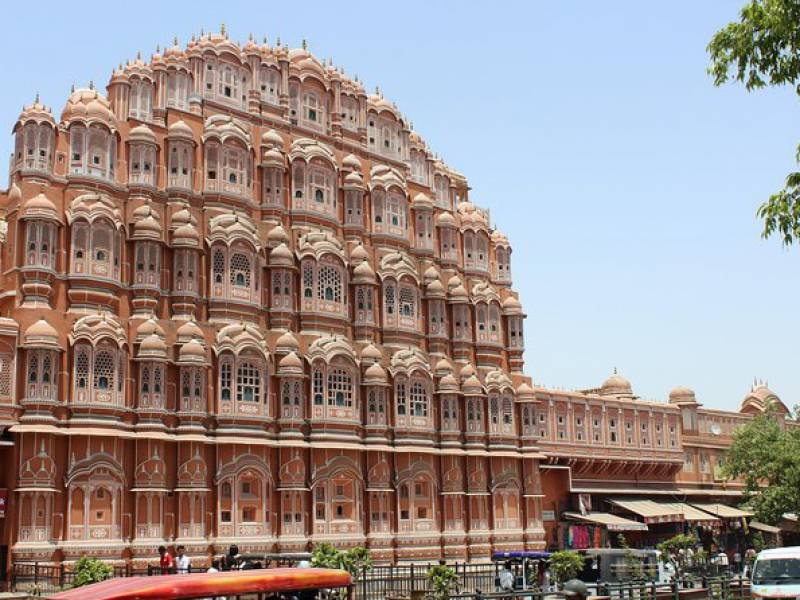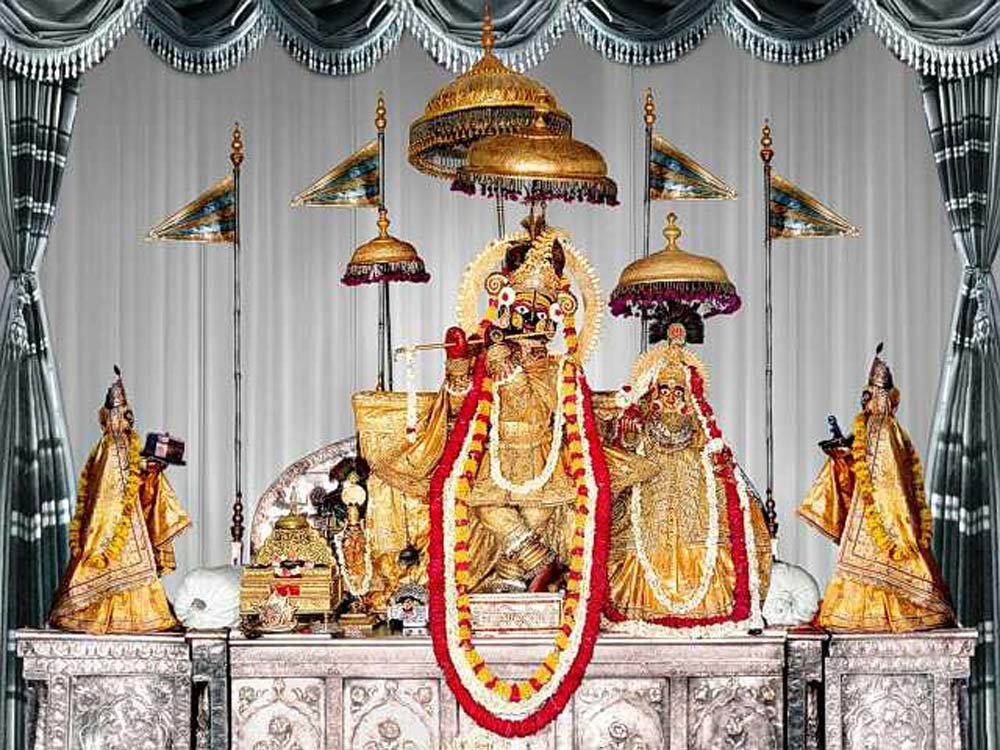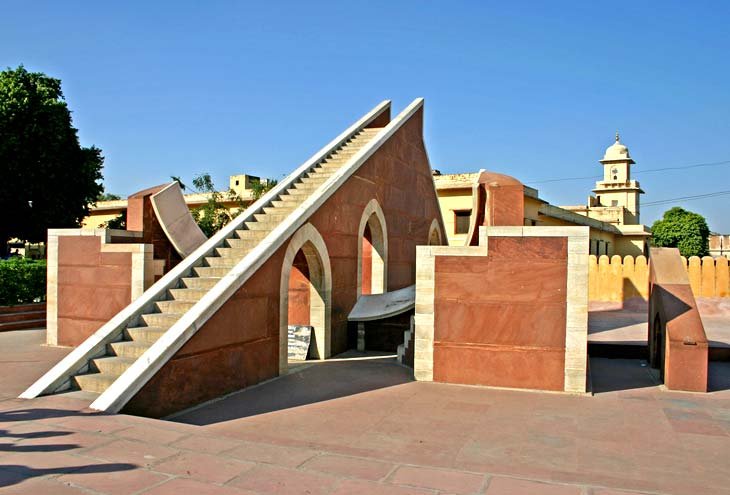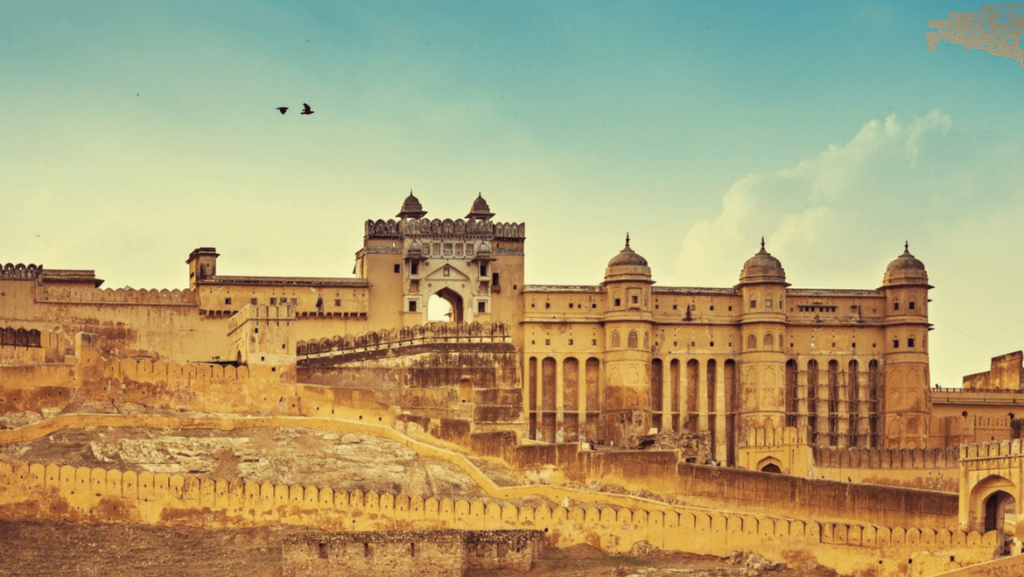 The city of Jaipur was founded by King of Amer, Maharaja Sawai Jai Singh II on November 18, 1727, who ruled from 1699 to 1743. He planned to shift his capital from Amer, 11 kilometres (7 mi) to Jaipur to accommodate thegrowing population and increasing scarcity of water.
Jai Singh consulted several books on architecture and architects while planning the layout of Jaipur. Under the architectural guidance of Vidyadhar Bhattacharya, Jaipur was planned based on the principles of Vastu Shastra and Shilpa Shastra.[13] The construction of the city began in 1726 and took four years to complete the major roads, offices, and palaces. The city was divided into nine blocks, two of which contained the state buildings and palaces, with the remaining seven allotted to the public. Huge ramparts were built, pierced by seven fortified gates.
The city of Jaipur was founded by King of Amer, Maharaja Sawai Jai Singh II on November 18, 1727, who ruled from 1699 to 1743. He planned to shift his capital from Amer, 11 kilometres (7 mi) to Jaipur to accommodate thegrowing population and increasing scarcity of water.
Jai Singh consulted several books on architecture and architects while planning the layout of Jaipur. Under the architectural guidance of Vidyadhar Bhattacharya, Jaipur was planned based on the principles of Vastu Shastra and Shilpa Shastra.[13] The construction of the city began in 1726 and took four years to complete the major roads, offices, and palaces. The city was divided into nine blocks, two of which contained the state buildings and palaces, with the remaining seven allotted to the public. Huge ramparts were built, pierced by seven fortified gates.
During the rule of Sawai Ram Singh I, the city was painted pink to welcome HRH Albert Edward, Prince of Wales (who later became King Edward VII, Emperor of India), in 1876.[14] Many of the avenues still remain painted in pink, giving Jaipur a distinctive appearance and the epithet Pink city.
In the 19th century, the city grew rapidly and by 1900 it had a population of 160,000. The wide boulevards were paved and its chief industries were the working of metals and marble, fostered by a school of art founded in 1868.[9] The city had three colleges, including a Sanskrit college (1865) and a girls’ school (1867) opened during the reign of the Maharaja Ram Singh II.
Large areas of the city including the airport were flooded in August 1981, resulting in the death of eight people and much damage to the city’s Dravyavati River.[18] The floods were caused by three days of cloud burst that produced more rain than the annual average.
Govind Dev Ji Temple
 The Vaishnava temple Govind Dev Ji is situated in Jaipur district in Rajasthan state of India. It is located in the JAI NIWAS BAGH. Murti is easily visible from City Palace. The temple is dedicated to Govind Dev Ji (Lord Krishna). This temple is among the 7 temples of Thakur of Vrindavan including Sri Radhavallabh ji, Shri Bankey Bihari Ji, Shri Govind Dev Ji and four others. The image of the deity (murti) was brought from Vrindavan hereby Raja Sawai Jai Singh II, the founder of Jaipur Under guidance of Goswami family. According to popular legend, Lord Krishna’s image in the temple looks exactly like Krishna’s form during his incarnation on Earth.
The Vaishnava temple Govind Dev Ji is situated in Jaipur district in Rajasthan state of India. It is located in the JAI NIWAS BAGH. Murti is easily visible from City Palace. The temple is dedicated to Govind Dev Ji (Lord Krishna). This temple is among the 7 temples of Thakur of Vrindavan including Sri Radhavallabh ji, Shri Bankey Bihari Ji, Shri Govind Dev Ji and four others. The image of the deity (murti) was brought from Vrindavan hereby Raja Sawai Jai Singh II, the founder of Jaipur Under guidance of Goswami family. According to popular legend, Lord Krishna’s image in the temple looks exactly like Krishna’s form during his incarnation on Earth.
According to the legend, the Image of Lord Govind Devji was also called “Bajrakrit”- indicating thereby that it was created by Bajranabh – The Great Grand Son of Lord Krishna. Some 5,000 years back when Shri Bajranabh was around 13 years old, he asked his Grand Mother (daughter-in-law of Lord Krishna) as to how Lord Shri Krishna looked like; Then He made an image as per the description given by her. She, however, said that not all but the feet of that image looked like those of Lord Shri Krishna. He made another image, yet she said that the Chest looked like that of Lord Shri Krishna. Thereafter, He made the Third Image and looking at the same she veiled her face as a show of modesty and remarked that the face of the deity was exactly like that of Lord Sri Krishna.
Jantar Mantar

The Jantar Mantar is a collection of 19 astronomical instruments built by the Rajput king Sawai Jai Singh II, the founder of Jaipur, Rajasthan. The monument was completed in 1734. It features the world’s largest stone sundial, and is a UNESCO World Heritage site. It is located near City Palace and Hawa Mahal. The instruments allow the observation of astronomical positions with the naked eye.The observatory is an example of the Ptolemaic positional astronomy which was shared by many civilizations.
The monument features instruments operating in each of the three main classical celestial coordinate systems: the horizon-zenith local system, the equatorial system, and the ecliptic system. The Kanmala Yantraprakara is one that works in two systems and allows transformation of the coordinates directly from one system to the other.
The monument was damaged in the 19th century. Early restoration work was undertaken under the supervision of Major Arthur Garrett, a keen amateur astronomer, during his appointment as Assistant State Engineer for the Jaipur District.
Amer Fort

Amer Fort or Amber Fort is a fort located in Amer, Rajasthan, India. Amer is a town with an area of 4 square kilometres (1.5 sq mi)[1] located 11 kilometres (6.8 mi) from Jaipur, the capital of Rajasthan. The town of Amer and the Amber Fort were originally built by Raja Man Singh and additions were, later, made by Sawai Jai Singh. Located high on a hill, it is the principal tourist attraction in Jaipur. Amer Fort is known for its artistic style elements. With its large ramparts and series of gates and cobbled paths, the fort overlooks Maota Lake, which is the main source of water for the Amer Palace.
Mughal architecture greatly influenced the architectural style of several buildings of the fort. Constructed of red sandstone and marble, the attractive, opulent palace is laid out on four levels, each with a courtyard. It consists of the Diwan-e-Aam, or “Hall of Public Audience”, the Diwan-e-Khas, or “Hall of Private Audience”, the Sheesh Mahal (mirror palace), or Jai Mandir, and the Sukh Niwas where a cool climate is artificially created by winds that blow over a water cascade within the palace. Hence, the Amer Fort is also popularly known as the Amer Palace.[4] The palace was the residence of the Rajput Maharajas and their families.
